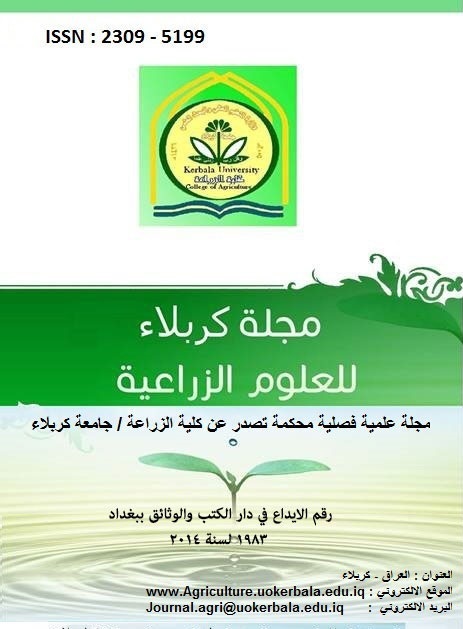Pedological analysis and statistical variation of mapping soil unit of Greater Mussiab Project / Babylon Province
DOI:
https://doi.org/10.59658/jkas.v4i4.313Keywords:
Soil series , Pedological analysis , Statistical variation , Soil mapAbstract
Soil survey map at series level of greater mussiab project 35 km north Babylon Province between 32˚ 32' - 32˚ 47' N and 44˚ 29' - 44˚ 55' E used to analysis pedologicaly to limit the state of soil series and their relation between them .Three soil series wich various in physiographic region was choose to determine the statistical variation of soil particle to study the sedimentological environment and characteristic of region sedimentology.
Results show 18 soil series various in frequency and their area , MM11 series was the greatest area and frequency , pedological distribution of texture was 35.02% to moderately coarse textured , 39.22% to moderately textured and 25.53% to fine textured , the result also show strong relationship between irrigation levee and river basin physiographic unit because both contain the same soil series , particles analysis appear medium and fine silt was over all average fraction . In mean time sediment exhibited poor sorting , positive skewness coefficient showed smooth surface due to abrasion fluvial transport and sediment as well as kurtosis coefficient appear.
Downloads
Published
How to Cite
Issue
Section
License
Copyright (c) 2017 Copyright (c) 2024 is the Author's article. Published by the Journal of Kerbala for Agricultural Sciences under a CC BY 4.0 license

This work is licensed under a Creative Commons Attribution 4.0 International License.
Licensing Terms
All articles are published under a Creative Commons License and will be directed to the Creative Commons Attribution 4.0 International License (CC BY 4.0) That permits use, distribution, and reproduction in any medium, provided the original work is properly cited. This license also allows the work to be used for commercial purposes.
Use by both non-commercial and commercial users
This content is licensed under a Creative Commons Attribution 4.0 International (CC BY 4.0) license, permitting use by both non-commercial and commercial users. Individual users may access, download, copy, display, and redistribute the articles to colleagues, as well as adapt, translate, and text- and data-mine the content, subject to the following conditions:
- The author's moral rights, including the right of attribution and the right to protect their work from derogatory treatment, are respected.
- Where content in the article is identified as belonging to a third party, users must ensure that any reuse complies with the copyright policies of the owner of that content.
- If the article content is reused for research or educational purposes, users should maintain a link to the appropriate bibliographic citation, including the DOI and a link to the published version on the journal's website.

